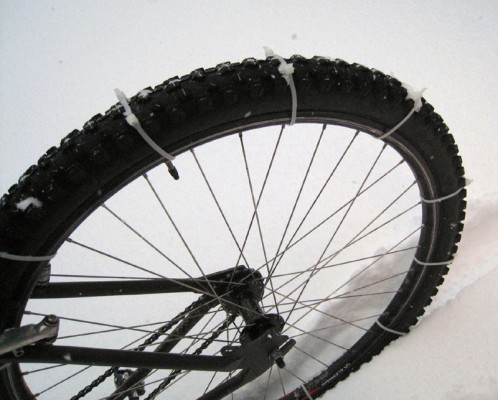 Here in Greenville, SC, significant snowfall is a fairly rare occurrence. The 6 to 8 inches that fell on Monday morning may not sound like much to many of you, but here in the southeast it was sufficient to shut down the city for most of the week. For me, it was a great opportunity to break out the sled and play in the snow with my kids.
Here in Greenville, SC, significant snowfall is a fairly rare occurrence. The 6 to 8 inches that fell on Monday morning may not sound like much to many of you, but here in the southeast it was sufficient to shut down the city for most of the week. For me, it was a great opportunity to break out the sled and play in the snow with my kids.
The snow also gave me the opportunity to try out the DIY zip tie snow tires that I had seen on the Dutch Bike Co blog. The 8-inch zip ties that I had in my garage were not quite long enough to close around the fat tires on my singlespeed 29er, so I ended up using two ties per section. The advantage of that was that that each section had 2 tie heads at the edge of the tread to dig into the ice, and that is exactly what they did.
I have to say, I was pretty surprised at how well this set-up really worked. I rode quite a bit on Monday, on roads and trails, and the zip-tie snow chains on my rear wheel really bit in to give me traction. Later in the week, as the snow melted and refroze, the DIY chains continued to grip, even on icy climbs that had been smoothed over by sleds and toboggans.
Of course, this would work best on a bike with disc brakes. To make it work with v-brakes, I disconnected the rear brake (zip-tied the straddle cable to the frame to keep it out of the way) and only applied the zip ties to the rear wheel. Chain stay and/or fender clearance are factors to consider as well, but this idea should be workable on most any bike out there. If you have snow and ice on the ground, and you don’t already have studded tires on your bike, consider giving this a try. If you do, let me know how it works for you.

Leave a Reply to Patrick Cancel reply